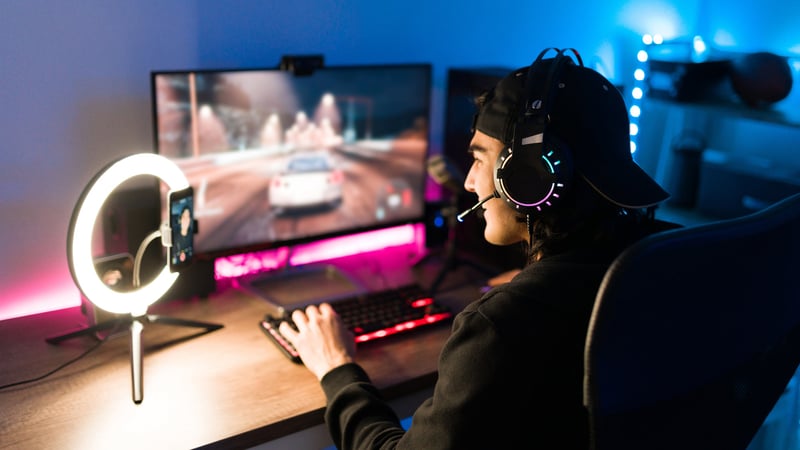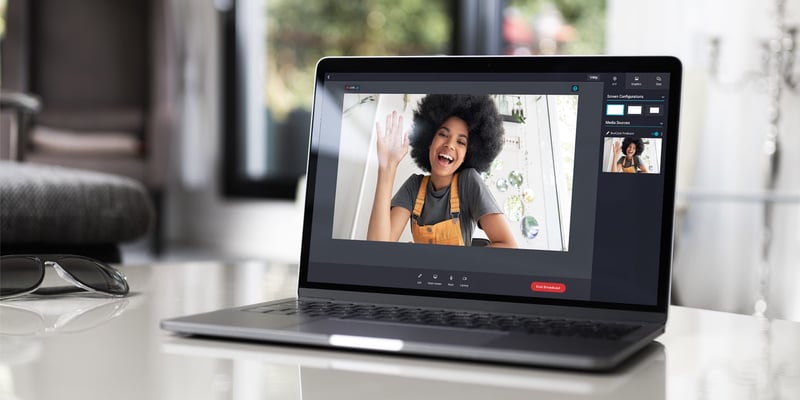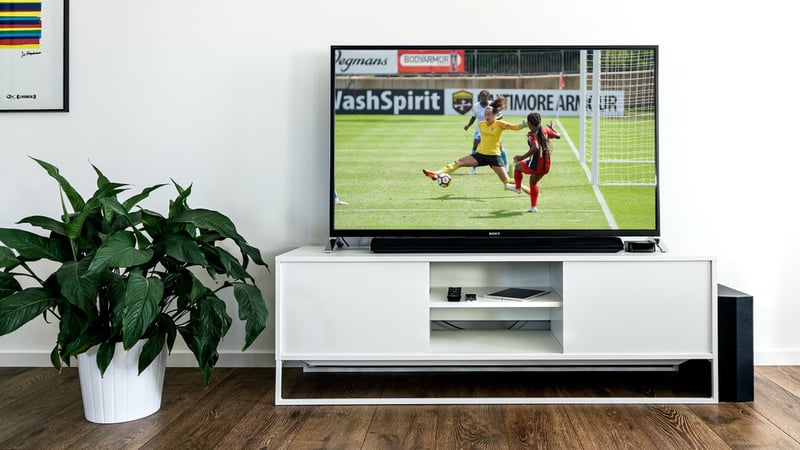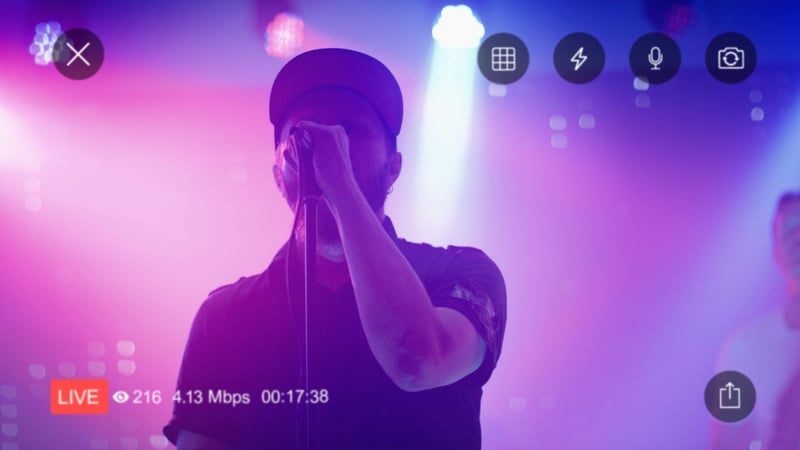VIDEO
Products
Streaming
Deliver flawless live video to any audience, anywhere
OTT Apps
Launch and monetize your own branded TV & mobile apps
Spark Encoder
Tap into hardware encoding that's compact and powerful
Broadcaster App
Go live straight from your phone or tablet with studio-quality control
Features
BoxCast Flow
Ensures smooth playback even on shaky networks
Sharing
Instantly clip, share, and amplify your broadcasts
Producer
Create professional streams right from your browser
Third-Party Encoders
Use the gear you love with our support of RTMP and SRT
AUDIO
RemoteMix
Mix live audio remotely from anywhere in the world
Compatible Mixers
Connect your favorite digital mixer to RemoteMix
INDUSTRIES
House of Worship
Reach and engage your congregation wherever they worship
Sports
Stream games with professional quality for fans everywhere
Local Government
Bring transparency and connection to your community broadcasts
Business
Power your corporate events, webinars, and live streams
LEARN
Blog
Insights, trends, and tips for the audio/video community
Tech Tips
Quick how-tos and deep dives on the latest streaming technology
Guides
Essential tips and expert strategies to expand your reach
Newsletter
Stay up to date with product news, best practices, and more
Podcast
Hear stories and strategies from our customers and experts
DISCOVER
Customer Stories
Explore real-world success stories to inspire your organization
Events
Join us at an upcoming conference and meet with our team
Webinars
Get all the details and register for our next live webinar
About Us
Discover our company's mission, values, and team story
Broadcasting, Live Streaming Destinations, Live Streaming Software

BoxCast Team • August 1, 2022
The way we watch things has changed drastically over the past generation. There was once a time when friends and families would carve out an hour in their busy day and put everything on hold to assemble before the television and watch each week's episode of the latest hit program.
Game of Thrones may have been the last example of a weekly scheduled broadcast format for a major show. HBO itself offers on-demand content, and competitors like Netflix have offered entire seasons of shows at a time for binge-watching.
Audiences today aren’t patient. They want their desired programming as quickly as possible — forget waiting an hour for a rerun. Some viewers may even want to pause or rewind a program to catch important details, which can then put them behind the live broadcast, missing more and more information.
Video on Demand, or VOD as it is colloquially known, allows viewers to enjoy their favorite broadcast at their leisure, whether that means watching whenever they want or pausing, fast-forwarding, and rewinding throughout.
VOD has changed entire industries and allowed amateur and enterprise content creators to get the most out of their work. Put simply, video on demand platforms let you stream the media you want whenever you want. This is done through a series of complicated network interactions, which you can read about in our blog on content distribution networks.
Today, we're focusing on what VOD can do for businesses, channels, and independent creators. VOD has been adopted worldwide, thanks to its ease of use and ubiquity, with large platforms like Youtube and Netflix being some of the most common examples of VOD software.
What kind of VOD content is popular now? Should you be releasing VODs or strictly live streaming? What kind of equipment do you need to enable VOD software?
If you’ve asked yourself any of these questions, read on for answers and more insight into VOD software.
| BoxCast | Vimeo | Uscreen | Dacast | |
| Storage limits | Unlimited | 7 TB total | 50, 150, 150+ hours | 1 TB storage |
| Streaming protocol | HLS | RTMP | HLS | HLS |
| Graphic overlays | Yes | Only premium | No | Yes |
| Video markers | Yes | Yes | No | Yes |
| Documents | Yes | Yes | Yes | No |
| Enhanced analytics | Yes | Google Analytics | Yes | Yes |
| Smart embedding | Yes | Yes | No | Yes |
| Hosting server | Yes | Yes | Yes | Yes |
| BoxCast TV | Netflix | Amazon Prime | Disney+ | YouTube Live | |
| Contract type | Monthly | Monthly | Monthly | Monthly | Monthly |
| User limit | Unlimited | 1, 2, and 4 users based on contract | 6 | 4 | 3 |
| Download limit | Unlimited | 100 titles | 15-25 titles (with restrictions) | Unlimited | Unlimited |
| Multi-bit rate streaming | Yes | Yes | Yes | Yes | Yes |
| Mobile support | Yes | Yes | Yes | Yes | Yes |
The greatest benefit VOD offers is that it makes your content available to your audience at their convenience. Whether they want to stream your broadcast in the middle of the night, on the train to work, or right after it’s aired, your viewers want instant access to your videos.
On-demand videos can be a great way to get the word out about new products or events, and make great marketing material in general due to their reusability. You can even use editing software to perfect your content, making sure your audience gets the highest-quality broadcast.
With everyday use of VOD becoming common, many older methods of information dissemination are falling to the wayside in favor of this new medium. One of the more popular new mediums is through video blogging.
These video blogs, aka vlogs, provide a much more interactive experience for viewers, boasting auditory and visual stimulation, which can even be accompanied by text via graphical overlays.

Vlogs can be extremely effective learning tools. The user controls allow for repeating parts of the video that may have been misunderstood, and the availability allows for review whenever the user would like.
On top of that, many people just aren't literary learners, and won’t benefit as much from a written blog as they will with a vlog. The tone of voice, body language, on-screen activities, and setting can all enhance the experience for visual and aural learners to a degree that written blogs can't hope to match.
The same ways that tone and cadence can resonate well with a viewer looking to learn can also be very effective with personal vlogging. Since YouTube revolutionized the early concepts of vlogging back in 2005, countless hours have been uploaded by users doing everything from building birdhouses to just ranting about their day.
Broadcasting platforms for live streaming video directly from a computer are one of the easiest ways to vlog. The format will be familiar to many YouTube consumers as YouTubers and other content creators often film video content directly from computers or phones in their homes. Platforms like Producer by BoxCast allow users to begin live streaming straight from their computer’s webcam in just a few clicks.

Game vlogging has also become a huge market in recent years. Many creators make reviews of video games, satirical or serious, and upload them online. This allows other consumers a chance to hear insights about the game before they buy it. Some people even prefer watching content creators play the game more than they would like to play themselves.
Some creators opt for a longer form of content, where they play through the entire game. These vlogs — called let's plays, playthroughs, or speedruns — can be a great way to retain audience members. Each new installment is a new episode, and the right schedule can turn a weekend gaming session into a community experience that also earns you money.
On-demand videos are used by businesses every day, from cubicles to board rooms. VOD provides effective methods for conducting onboarding and training. As mentioned above, some people just learn better when they can see what the task is.

VOD allows for dynamic, comprehensive training videos and tutorials that can literally provide different angles on how to solve a problem. Even if you’re working with software, videos can be a useful way to follow processes in the correct order, ensuring they’re completed properly.
Welcome videos and other onboarding materials do well in VOD form, as they allow for some enthusiasm to be added to the boilerplate discussions about brand identity and corporate innovation. On top of that, hiring trainers, professional developers, and workshop operators can be costly. With the right video, you can get years of use out of one investment.
Presentations and proposals can benefit from VOD software, too. The ability to record or even prerecord your pitch before a meeting can dramatically reduce human error and ensure you have every piece of pertinent information covered in your presentation. It can also be handy if stakeholders aren't all present and some need to watch the presentation later. Thanks to VOD, they won't have to miss any details or sit through a watered-down presentation.
Whatever device you're currently using, chances are after you read this blog, you're going to watch a video. Or you watched one before. Or you'll do both.
A study by Cisco reveals that video traffic will quadruple by 2022, taking up roughly 82% of total IP traffic. With streaming companies offering entire seasons to binge and the most popular sports and events being available to view online, it isn't really a surprise that video traffic is such a hefty portion of the total. Modern platforms have the capability and the content to meet the demand, and while some opt to offer a premium subscription for unlimited access, other companies choose a different means of revenue: ads.
We all thought we'd escaped commercials when we first made the switch from cable to streaming. No Cars-4-Kids jingles got stuck in our heads (that space was expressly reserved for Rick Astley), but it quickly became clear that letting such exposure pass by was a colossal waste of opportunity for businesses.
Nowadays, even a short YouTube video is prefaced by at least one ad, and while it may seem like a good idea to inject some revenue into your channel, you should be wary because ads can be a double-edged sword.
Part of what makes VOD so successful is the instant access it grants to users. Placing ads before, during, and after your program can disrupt the tone and the audience's immersion, as well as be downright annoying.
If you have to insert ads into your VOD broadcasts, it may be worth looking into what kind of demographics make up your audience, and then offering the ad space to companies that would interest your viewers. If you can get a sponsorship, that's even better!
Sporting events are excellent opportunities to use VOD to bring the best show possible to your audience. Giving the viewer playback control lets them watch the game at their own pace, analyzing every play if they like or just watching the action all in one sitting. Custom graphics like Scoreboard Overlays are also available to add an extra personal touch to your broadcast.

Sport VOD can also be used to learn from past games and develop new plans. Reviewing game tape with the ability to pause, slow down, and rewind can allow for in-depth analysis on what worked, what went wrong, and what needs to be done better.
This functionality isn't limited to competitive uses — it can also allow for the creation of highlight reels that showcase a team or athlete's performance, be used as promotional material, or just to celebrate a great season.
VOD is also widely used in artistic endeavors. Thanks to large-scale platforms like YouTube, entire industries have come out of comedy skits and short-form content. Many artists use VOD software in order to create a demo reel for themselves. This can range from musical performances, dramatic readings, and choreographed routines. The ease of distribution lets these users get their recordings out to as many people as they like, so they can cast the net wide as they hope to be discovered.
Some have made entire careers out of VOD by creating weekly content that’s made to be rewatched. Channels like Smosh and JennaMarbles were designed with rewatchability in mind, and often engaged in gimmicks outside of their standard comedy to keep things fresh and diverse.
It’s no secret that life can be busy. While plenty of us would love to make time and become active in our communities, it can be tough to balance it all. With VOD software, you can stay up to date and in touch with everything you've missed.
Town halls and local government meetings can be recorded and distributed to all interested parties so everyone in the community can hear what’s happening and make their voices heard if they like. The ability to fast-forward and even skip portions of these meetings is also important, as many people may only be interested in niche issues and prefer to address those rather than the entire agenda.

Religious functions have made huge transitions to the digital space throughout the pandemic. With access to religious areas being restricted or avoided, VOD software helps keep users connected and can even enhance the experience. If an audience member is particularly moved by a service, they can download it for later reflection.
With so many benefits to VOD streaming, you may be wondering if you should even bother broadcasting live. There's a lot to be said about both methods, and live streaming certainly has some advantages VOD can't replicate.

The best part of a live stream is the feeling of connectivity and community shared by the on-air talent, the producers, the tech crew, and the audience. When a live show comes together, whether that's a huge stadium concert or a local human interest story for the news, there’s an unmistakable energetic quality to the broadcast.
This can be enhanced even further by introducing community interactions to your stream. Many broadcasters have chats and other mediums to talk to their viewers on stream in real time. Instead of just letting your viewers experience your broadcast, this lets them participate with you.
The high of a perfectly performed live show is tough to top. Hitting every note, landing every line, and getting all the shots you need can make you feel like a million bucks. Or it would, if it actually happened.
Real life is messy, and even live shows filmed in studios are subject to error. Once you step outside a closed studio, things get even dicier. On top of needing to properly transport, set up, and operate all of your equipment, you also need to be mindful of weather and wildlife that could interfere with or damage it.
Everyone needs to be on their A-game when a show goes live, and so any single moving part can cause a cascade of failures if not handled correctly. One of the biggest difficulties of live broadcasting is that you're forced to deal with errors and mistakes as they happen so you might need to improvise on camera, alter your broadcast schedule, or change locations altogether.
You don't have the luxury of just cutting and making the appropriate changes. Your live event is still going on while you get out of the rain, and your audience won't care that you didn't want your gear ruined, because they want the show.
On top of all of this, live shows are bandwidth intensive, so viewers will need to be in a good setting to watch or risk eating through their data.
Shopping for the right VOD platform should take certain necessities into account. Live stream recording is a crucial feature for those who want to get the most out of both live and VOD streaming. Some platforms automatically save and archive live streams for later use.
Ads can be a major turn-off for viewers, but can also be used to supplement hefty subscription fees. It is up to you to decide if your channel is better served by low operating costs but interrupted videos, or if you can afford a paid subscription plan and skip the ads.
Editing and graphical overlay are excellent features to have in a VOD platform. This allows you to polish and fine-tune your broadcasts to be even more successful. You can add critical details to sporting events, cut filler in between concert sets, or remove errors by the on-air talent.
Great VOD software needs to be adaptable and able to integrate with the latest devices. Phones are used as often to watch videos as desktops these days, so your VOD platform needs to have mobile support. This means your software needs to enable remote viewing while also having a user interface that works on a mobile device. Bandwidth requirements for VOD aren't quite as intensive as live streaming, but you still need to be able to support 4k streaming to keep up with competitors.
To learn more about the hardware necessary to support VOD, check out our blog on equipment for live streaming. The same technology is usually also applicable to VOD productions.
BoxCast offers a full array of tools to help you publish VOD content in multiple locations. An auto-record feature allows you to publish previously live streamed events nearly immediately after the event is complete, and permits you to trim and add closed captioning.
Simulated Live is an extremely popular feature that lets you upload a prerecorded video at a certain time over a live stream as if it were being streamed live. Using Simulated Live preserves the community aspect of a live stream (we’re all in this together) while affording you the ability to broadcast content that’s been carefully curated and edited. Best of all, videos are uploaded to the BoxCast Platform and played back from a content delivery network over a live stream, so you don’t have to have a steady internet connection to accomplish this.
Embedding options abound inside the BoxCast Platform. You can add your VOD by individual video or by channels (grouping similar videos into a playlist), and send them to a BoxCast.tv link, your own website, or set top box channels (like a Roku or Apple TV). You can even send them along to YouTube and Vimeo accounts, or create an RSS feed for your podcast.
There are even more features inside the BoxCast Platform to help you enhance your viewers’ experience. You can trim your recordings as well as create video indexes so viewers can skip to the part of the video they’re most interested in. You can create highlight clips to advertise your video, or so people can watch the game-winning touchdown without skimming through the whole video. Live captioning and analytics are available for VOD as well. Check out all of our feature options by plan here.
Yes! BoxCast allows you to upload content that has VOD and rebroadcast it as if it were live. Learn how to use our Simulated Live feature to schedule and re-broadcast an existing recording.
With BoxCast, you can create channels, which are a quick way to organize your content into playlists.
Yes! You can create a podcast channel with BoxCast, which will create an RSS feed for you to send to popular podcasting platforms like Apple Podcasts and Spotify.
No, you don’t need a BoxCast account to watch a broadcast hosted by BoxCast. However, you may need to buy a ticket if the broadcast was ticketed through BoxCast.
You should be able to watch on almost any mobile device or computer. BoxCast has apps for Roku, Amazon Fire, and Apple TV — ticketed events can’t be viewed this way. Check out our recommended way of viewing a broadcast with your preferred device in this article.
© 2025 BoxCast. All Rights Reserved. | +1-888-392-2278